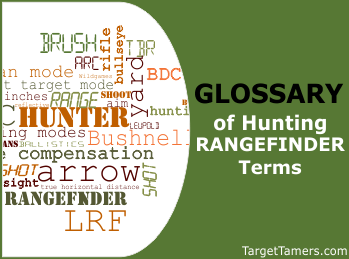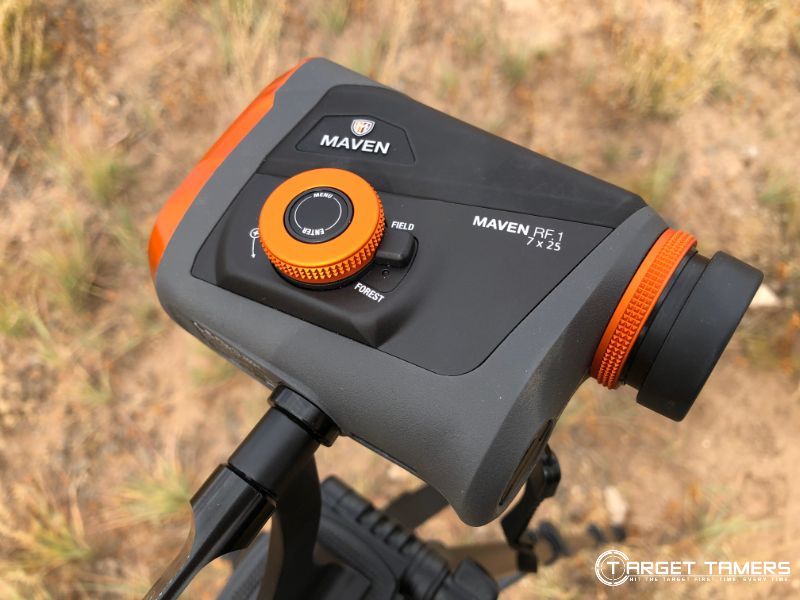
Are you ranging the sports optics field and you're not sure what to make of this term and that term?
You're bound to come across a word or two that will need a little more explaining than just the expanded version of the given abbreviation.
Here's a glossary of hunting rangefinder terms that can get you up to date so you're not left feeling confused.
Hunting Rangefinder Terms
A | B | C, D, E | F, G, H, I | J, K, L | M, N, O, P | Q, R | S, T | U, V, W | X, Y, Z
A
ABC - Advanced Ballistics Compensation technology combines Leica's built-in inclinometer, barometer, and thermometer readings with your rifle's zeroing distance and ballistics data to give you ballistic values to get precise accuracy. (See also BDC, Holdover)
AI - Angle Intelligence technology is Halo rangefinder term for calculating angle compensation values. (See also Angle Compensation)
Angle Compensation - Angle compensation technology has come a long way in the last decade, and it may be the one feature you can't go without. It's designed for both the bow hunter and rifle hunter in mind. No matter what incline or decline you're on, you can have the true horizontal distance, suggested angle shot, or the holdover to accurately hit your target. (See also "A Beginners Guide to Understanding Angle Compensation")
ARC - Angle Range Compensation is Bushnell's term for calculating suggested angle shots, bullet drops, and the line of sight distance you need to make the shot. (See also Angle Compensation)
B
BDC - Bullet Drop Compensation. This is a feature that many laser rangefinders offer. It calculates various values to ensure accurate shooting by compensating for the effect that gravity has on a bullet during travel flight. It will tell you how to adjust your sights to ensure an accurate shot. This is only effective with known distances. (See also Holdover)
Bow Mode - Bushnell's ARC Bow Mode displays the true horizontal distance.
Bullseye - This is Bushnell's term for ranging in on close and small game or objects without ranging in on distant targets. (See also First Target Mode)
Brush - Bushnell's term for ranging background target distances. (See also Second Target Mode)
C, D, E
Clearshot Technology - This is Bushnell's bow hunting rangefinder feature that can provide instantaneous feedback on your arrow's shot clearance and max height of the arrow's flight path.
Distant Target Priority Mode - Nikon's term for getting distances on background objects. (See also Second Target Mode)
DNA - Digitally eNhanced Accuracy is Leupold's guarantee to accuracy within 1/10th of a yard.
ESP - Extreme. Speed. Precision. technology is Bushnell's promise to 1/2 yard accuracy and 1/10th yard display precision.
F, G, H, I
First Target Mode - This is a general term that's used to describe a type of targeting mode the laser rangefinder will operate by. This mode is used ranging for small targets or objects in close distances by ignoring background target distances. If more than one distance is ranged, first target priority mode will give you the distance of the closest target.
First Target Priority Mode - Nikon's term for close-range targeting. (See also First Target Mode)
Holdover - Holdover is the value you'll need to correct your aim when shooting at known distances to ensure an accurate shot since gravity has an effect on ammunition during flight travel. (See also BDC)
ID (Incline/Decline) Technology - Nikon's term for calculating compensated values whether you're uphill or downhill. (See also Angle Compensation)
Inches - In the laser rangefinder world, the term "inches" is typically used when referring to ballistics. It will tell you how many inches you need to hold over or under when aiming for your target.
J, K, L
Line of Sight - This is the distance from your eye to the target. It will always be longer than the true horizontal distance to the target. Line of sight distances are appropriate for ranging in generally flat areas without much elevation to differ from the true horizontal distance.
LRF - Laser Rangefinder.
M, N, O, P
MIL - Milliradians of Angle. This tells you what the correct elevation is to sight your scope for zero.
MOA - Minute of Angle. This tells you what the correct elevation is to sight your scope for zero.
OLED Display - This is Leupold's Organic Light Emitting Diode (LED) display.
Q, R
Rain-Guard HD - This is Bushnell's protective lens coating that's hydrophobic, oleophobic, and permanent. It protects against condensation from your breath and from droplets from the rain, snow, and sleet. The protective coating causes the droplets to bead up and disperse off the lens.
Rain Mode - Bushnell's targeting mode that distinguishes between rain and snow to acquire a reading on the target.
Ranging Modes - This refers to the engine the rangefinder is operating on for the appropriate type of target acquisition. Generally, these modes are Scan, First, and Second Modes. Each brand has their own term for these modes but it's all essentially the same function.

Reflective Mode - This is Bushnell's mode that provides distances by ranging the brightest object displayed in the frame.
Rifle Mode - Bushnell's ARC Rifle Mode provides holdover/bullet drop information for ranging between 100 to 800 yards.
S, T
Scan Mode - Most rangefinders have this feature that continuously provides instantaneous updates of a moving target's distances. (See also Ranging Modes)
Second Target Mode - This is a general term that's used to describe a type of targeting mode the laser rangefinder will operate by. This mode is used for long distance and background ranging. By ignoring the foreground, the rangefinder can give you the readings of the furthest targets.
TBR - True Ballistic Range technology is Leupold's program that provides calculations according to your rifle's ballistics to get an accurate range to the target. (See also BDC, Holdover)
True Horizontal Distance - This is the distance you should use when aiming for your target. Because gravity only acts on a horizontal flight path, the angle compensated horizontal distance is the actual distance you need to shoot for to get on point.
Tru-Target Priority System - This is Nikon's ranging system technology. (See also Ranging Modes, First Target Priority Mode, Distant Target Priority Mode)
U, V, W
VSI - Variable Sight-In Mode is Bushnell's rifle ballistic technology that allows you to input bullet-drop/holdover data over your firearm's zero using pre-set distances of 100, 150, 200, and 300 yards. VSI also calculates angle shots up to +90 and -90 degrees. (See also BDC, Holdover)
X, Y, Z
Yard Range - These are the distances that the rangefinder is capable of acquiring target identification.
Now you know the lingo, here's 10 TOP TIPS to getting the most out of your rangefinder.
Further Reading



